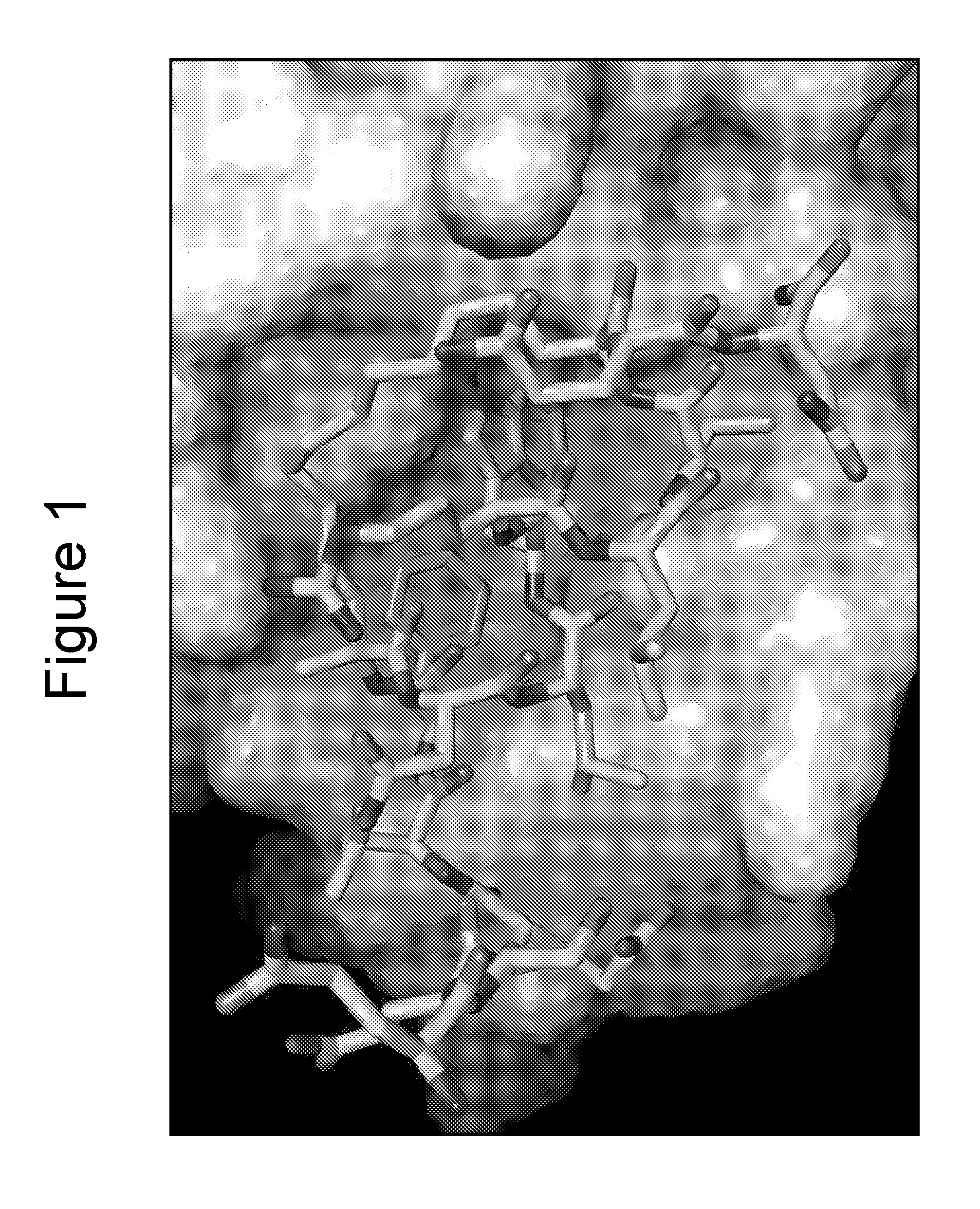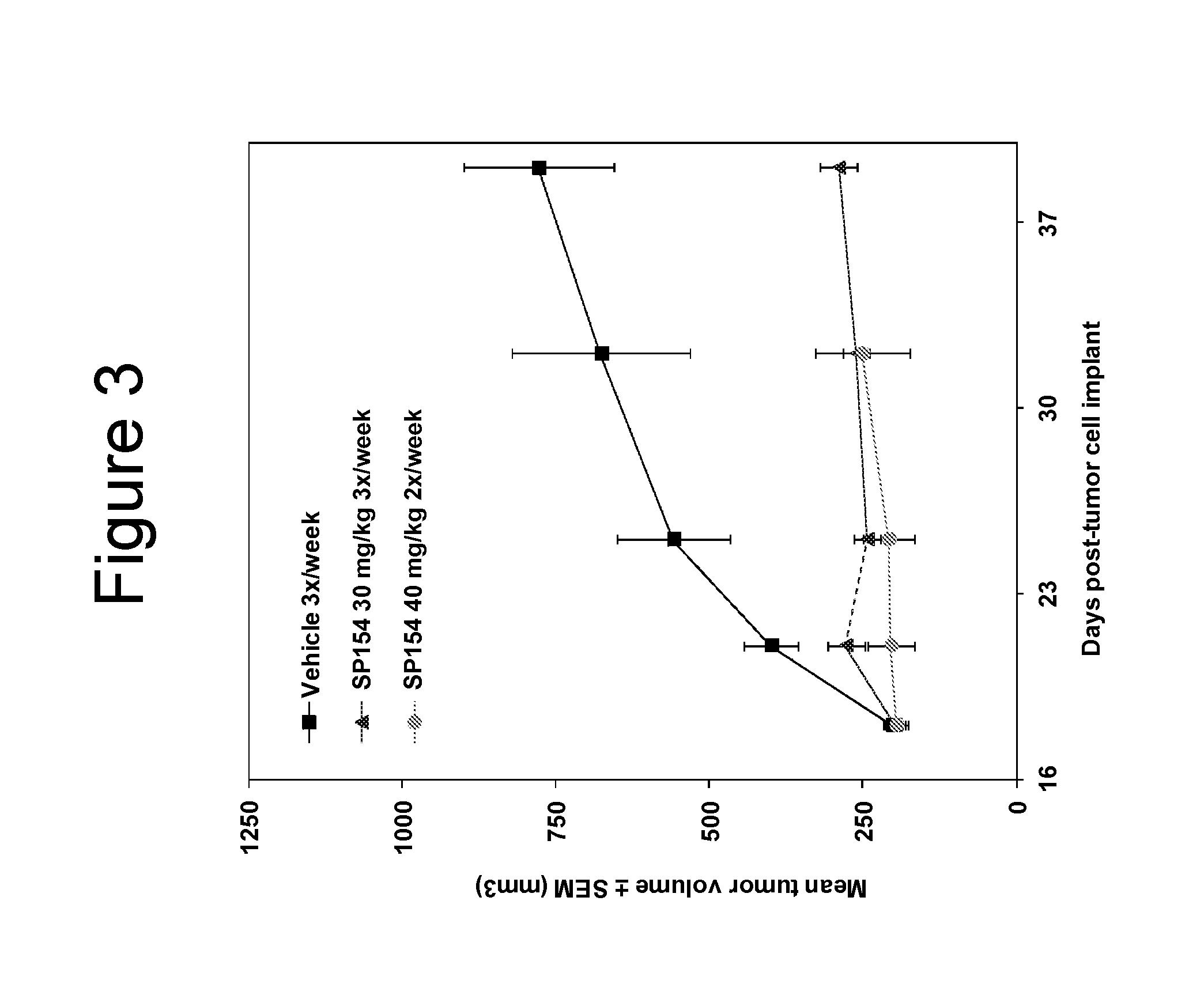Peptidomimetic macrocycles
a macrocycle and peptide technology, applied in the field of peptidomimetic macrocycles, can solve the problems of p53 expression and p53 expression of tumors, and achieve the effects of stabilizing the alpha-helical secondary structure, inhibiting its destruction, and improving biological activity
- Summary
- Abstract
- Description
- Claims
- Application Information
AI Technical Summary
Benefits of technology
Problems solved by technology
Method used
Image
Examples
example 1
Synthesis of 6-Chlorotryptophan Fmoc Amino Acids
[0407]
[0408]Tert-butyl 6-chloro-3-formyl-1H-indole-1-carboxylate, 1. To a stirred solution of dry DMF (12 mL) was added dropwise POCl3 (3.92 mL, 43 mmol, 1.3 equiv) at 0° C. under Argon. The solution was stirred at the same temperature for 20 min before a solution of 6-chloroindole (5.0 g, 33 mmol, 1 eq.) in dry DMF (30 mL) was added dropwise. The resulting mixture was allowed to warm to room temperature and stirred for an additional 2.5 h. Water (50 mL) was added and the solution was neutralized with 4M aqueous NaOH (pH ˜8). The resulting solid was filtered off, washed with water and dried under vacuum. This material was directly used in the next step without additional purification. To a stirred solution of the crude formyl indole (33 mmol, 1 eq.) in THF (150 mL) was added successively Boc2O (7.91 g, 36.3 mmol, 1.1 equiv) and DMAP (0.4 g, 3.3 mmol, 0.1 equiv) at room temperature under N2. The resulting mixture was stirred at room tem...
example 2
Peptidomimetic Macrocycles
[0415]Peptidomimetic macrocycles were synthesized, purified and analyzed as previously described and as described below (Schafmeister et al., J. Am. Chem. Soc. 122:5891-5892 (2000); Schafmeister & Verdine, J. Am. Chem. Soc. 122:5891 (2005); Walensky et al., Science 305:1466-1470 (2004); and U.S. Pat. No. 7,192,713). Peptidomimetic macrocycles were designed by replacing two or more naturally occurring amino acids with the corresponding synthetic amino acids. Substitutions were made at i and i+4, and i and i+7 positions. Peptide synthesis was performed either manually or on an automated peptide synthesizer (Applied Biosystems, model 433A), using solid phase conditions, rink amide AM resin (Novabiochem), and Fmoc main-chain protecting group chemistry. For the coupling of natural Fmoc-protected amino acids (Novabiochem), 10 equivalents of amino acid and a 1:1:2 molar ratio of coupling reagents HBTU / HOBt (Novabiochem) / DIEA were employed. Non-natural amino acids ...
example 3
X-Ray Co-Crystallography of Peptidomimetic Macrocycles in Complex with MDMX
[0440]For co-crystallization with peptide 46 (Table 2b), a stoichiometric amount of compound from a 100 mM stock solution in DMSO was added to the zebrafish MDMX protein solution and allowed to sit overnight at 4° C. before setting up crystallization experiments. Procedures were similar to those described by Popowicz et al. with some variations, as noted below. Protein (residues 15-129, L46V / V95L) was obtained from an E. coli BL21(DE3) expression system using the pET15b vector. Cells were grown at 37° C. and induced with 1 mM IPTG at an OD600 of 0.7. Cells were allowed to grow an additional 18 hr at 23° C. Protein was purified using Ni-NT Agarose followed by Superdex 75 buffered with 50 mM NaPO4, pH 8.0, 150 mM NaCl, 2 mM TCEP and then concentrated to 24 mg / ml. The buffer was exchanged to 20 mM Tris, pH 8.0, 50 mM NaCl, 2 mM DTT for crystallization experiments. Initial crystals were obtained with the Nextal (...
PUM
| Property | Measurement | Unit |
|---|---|---|
| temperature | aaaaa | aaaaa |
| fluorescent | aaaaa | aaaaa |
| hydrophobic | aaaaa | aaaaa |
Abstract
Description
Claims
Application Information
 Login to View More
Login to View More - R&D
- Intellectual Property
- Life Sciences
- Materials
- Tech Scout
- Unparalleled Data Quality
- Higher Quality Content
- 60% Fewer Hallucinations
Browse by: Latest US Patents, China's latest patents, Technical Efficacy Thesaurus, Application Domain, Technology Topic, Popular Technical Reports.
© 2025 PatSnap. All rights reserved.Legal|Privacy policy|Modern Slavery Act Transparency Statement|Sitemap|About US| Contact US: help@patsnap.com



